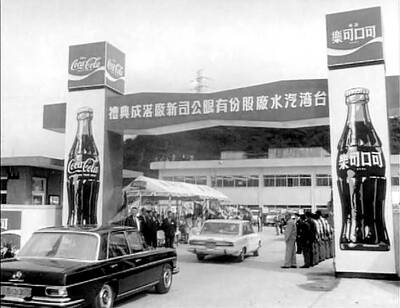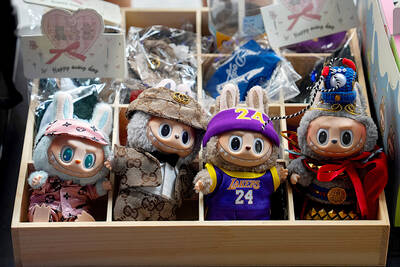Summer is in full swing and with the Penghu Fireworks Festival underway, it is peak tourist season in Penghu right now. For anyone planning a trip this summer, you won’t want to miss out on Penghu’s ocean scenery and excellent swimming. However, with literally hundreds of kilometers of coastline and beaches seemingly at every turn, it can be overwhelming to plan your trip. Here, then, is your guide to the beaches of Penghu.
This guide covers beaches with road access from Magong (馬公). They have been sorted into three types: those with nice scenery but limited or no swimming, those where other activities are the main attraction, and those that are well suited to a day of sunbathing and frolicking in the water.
For each section, the guide starts at the extreme southwest, near the end of Route 201 at Fongguei Cave (風櫃洞), and proceeds counter-clockwise around to Siyu Township (西嶼鄉). Follow along visually with the map at https://bit.ly/PenghuBeaches.

Photo by Tyler Cottenie
SCENIC SPOTS
The majority of beaches in Penghu have sandy shores that give way quickly to rocky bottoms. Though not well suited to swimming, they may still be worth a stop if you are touring the islands by car or scooter.
About 2km east of Fongguei Cave is a stretch of soft white sand beside the road known as Lovers’ Beach (情人海灘) You can easily have the whole place to yourself, and on a sunny day the water shines a brilliant turquoise at this south-facing beach.

Photo by Mark Kao
Over in the northeast corner of Husi Township (湖西鄉) is the Kuibishan Recreation Area (奎壁山), usually crowded with tourists. On the north side of the peninsula, however, is a secret white-sand beach tucked under black basalt cliffs. The contrast of colors and relative solitude here are remarkable. To reach the beach, follow the eastern shore at low tide, or approach from above the cliffs and look for the steep fisherman’s trail cutting down.
Next to the North Sea Visitor Center, where ferries run to the northern islands, is the gorgeous Chihkan Beach (赤崁). Washrooms are available at the visitor center, and this beach is generally kept very clean despite the amount of trash that washes up every winter from the northeast monsoon winds. At high tide, this one is swimmable.
Around the next point further west is Baisha Beach (白沙). A narrow concrete road with shady pavilions runs the entire length of the beach, so if you are passing nearby on a scooter, it’s worth the small detour for this stretch of ocean scenery.

Photo by Tyler Cottenie
After crossing the Penghu Great Bridge, Houluo Beach (后螺) on the right is a nice place to stop for a view of the bridge. The sand here is also particularly fine and soft, but there are big rocks on the beach that are obstacles to swimming.
Finally, Dream Beach (夢幻) just south of the Dachih Fishing Harbor (大池漁港) and Chihma Beach on the west side of Chihma Village (赤馬村) are both quiet, quaint little beaches with pavilions that are great places to watch the sunset near town.
COASTAL ACTIVITIES

Photo by Tyler Cottenie
The main Penghu islands are not a scuba or snorkeling destination. However, if you do bring your mask and snorkel and are looking for a place to jump in, Lovers’ Bay (情人灣) next to Fongguei Cave is a decent place to see some marine life, as long as you are a confident swimmer. Enter deep water directly from the rocks behind the high viewing platform at Fongguei Cave, or enter gradually from the sandy beach just to the east.
Over at the Kuibishan Recreation Area on the eastern shore is one of Penghu’s major attractions. The beach here is nothing special, but at low tide a land bridge to the nearby island appears. Visitors who time it right have the opportunity to walk across this temporary bridge and explore the intertidal zone on either side.
At the tip of the next point of land to the west is the Cingluo Sand Spit (青螺沙嘴), a protrusion of sand surrounded on three sides by ocean. This is an ideal stop for bird lovers, as part of the beach is closed to the public as a protected area for the little tern.

Photo by Mark Kao
Up in Baisha Township (白沙鄉), north of the Citou (岐頭) ferry terminal, lies Citou Beach, a long empty stretch of sand facing northeast. The intertidal zone here abounds with marine life like sea anemones, sea cucumbers, sea urchins, hermit crabs and more. If you’re passing through near low tide, it’s worth a look.
All along the western half of Baisha’s north coast is the Houliao Beach (後寮), worth a visit for photography (or Instagram) enthusiasts. There are several fishing boats on the sand next to the harbor, brightly painted in the style of characters from the manga series One Piece. On the east end of the beach is a narrow, curved, concrete jetty, dubbed “Paradise Road.” Walk out onto the jetty at high tide for the best pictures.
A similar setting can be found near Chisi Village (池西村) in Siyu Township, where black basalt rocks were stacked to create a fish trap. This one is best visited at low tide, when the tops of the trap’s walls are exposed. To reach the trap, drive west past the white sand beach to the end of the road and then walk out toward the sea.

Photo by Tyler Cottenie
THE BEST SWIMMING BEACHES
Of course, the main reason many want to spend a day at the beach is to play in the water and relax in the soft sand. Penghu has several excellent swimming beaches that boast beautiful blue waters, fine white sand, convenient facilities nearby and more — everything you could want in a beach, except perhaps solitude.
Shihli Beach (嵵裡) and Shanshuei Beach (山水) on the south shore are simply gorgeous, rivalling the best beaches in Kenting National Park. The soothing sound of the waves crashing gently on fine sand and the brilliant blue of the water are exactly what one imagines when picturing a tropical paradise. There are also showers, bathrooms, food and drinks available nearby at both. Shanshuei can be a bit more crowded, but it also features a playground for children and a 7-Eleven nearby.

Photo by Tyler Cottenie
Around the corner are Aimen Beach (隘門) and Lintou Park Beach (林投), which are actually one continuous stretch of fine golden sand. Aimen has a livelier atmosphere, with beachside restaurants and motorized water sports, while the Lintou side only has a single cafe and some art exhibits.
For a quieter experience, try Longmen Beach (龍門) on the eastern shore. The sand is only slightly coarser here and the view is no less impressive than Aimen, with wide-open ocean to the horizon and a wind turbine silhouetted against the sky on the south end.
The final two swimming beaches are far to the west in Siyu Township. For families with small children, the small beach on Siaomen Island (小門嶼) is an ideal destination. It is small, but clean and well sheltered from ocean waves. After exploring the nearby geological museum and whale cave, this would be a great place to relax for the rest of the day.
Finally, the beach at the Neian Recreation Area (內垵), nestled at the bottom of a green slope, is the most remote on the main Penghu islands and this author’s favorite. The bottom of the bay is wide, flat and shallow, which is not only great for swimming, but also creates long, gentle breaking waves. Being so far from Magong and separated from the road by a steep hill, the beach feels especially remote and tranquil. There is no better place to unplug and unwind on your Penghu beach holiday.

July 28 to Aug. 3 Former president Chiang Kai-shek (蔣介石) reportedly maintained a simple diet and preferred to drink warm water — but one indulgence he enjoyed was a banned drink: Coca-Cola. Although a Coca-Cola plant was built in Taiwan in 1957, It was only allowed to sell to the US military and other American agencies. However, Chiang’s aides recall procuring the soft drink at US military exchange stores, and there’s also records of the Presidential Office ordering in bulk from Hong Kong. By the 1960s, it wasn’t difficult for those with means or connections to obtain Coca-Cola from the

No one saw it coming. Everyone — including the Chinese Nationalist Party (KMT) — expected at least some of the recall campaigns against 24 of its lawmakers and Hsinchu Mayor Ann Kao (高虹安) to succeed. Underground gamblers reportedly expected between five and eight lawmakers to lose their jobs. All of this analysis made sense, but contained a fatal flaw. The record of the recall campaigns, the collapse of the KMT-led recalls, and polling data all pointed to enthusiastic high turnout in support of the recall campaigns, and that those against the recalls were unenthusiastic and far less likely to vote. That

A couple of weeks ago the parties aligned with the People’s Republic of China (PRC), the Chinese Nationalist Party (KMT) and the Taiwan People’s Party (TPP), voted in the legislature to eliminate the subsidy that enables Taiwan Power Co (Taipower) to keep up with its burgeoning debt, and instead pay for universal cash handouts worth NT$10,000. The subsidy would have been NT$100 billion, while the cash handout had a budget of NT$235 billion. The bill mandates that the cash payments must be completed by Oct. 31 of this year. The changes were part of the overall NT$545 billion budget approved

Trolleys piled high with decapitated silicon monster heads, tattooed dealers lurking in alleyways, bin bags of contraband hidden behind shop counters: welcome to the world of Lafufus. Fake Labubus (拉布布), also known as Lafufus, are flooding the hidden market. As demand for the collectable furry keyrings soars, entrepreneurs in the southern trading hub of Shenzhen are wasting no time sourcing imitation versions to sell to eager Labubu hunters. But the Chinese authorities, keen to protect a rare soft-power success story, are cracking down on the counterfeits. “Labubus have become very sensitive,” says one unofficial vendor, in her small, unmarked, fake designer goods